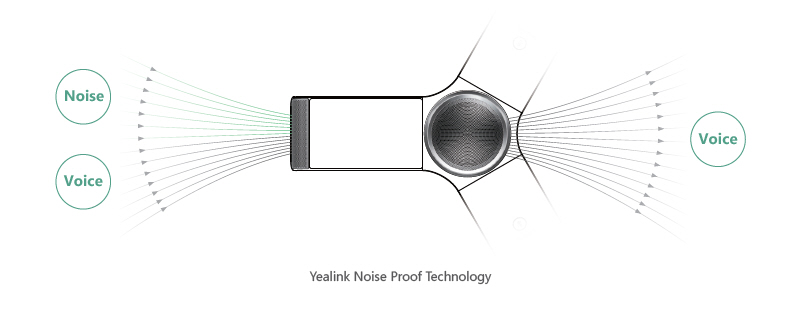Introduction
The world of communication has undergone a profound transformation over the years. Starting from the simple landline telephones that once dominated our homes, we've journeyed through various technological advancements to arrive at the sophisticated VoIP (Voice over Internet Protocol) phone systems of today. This evolution reflects not only changes in technology but also shifts in how we connect and communicate with one another. In this article, we will extensively explore “The Evolution of Communication: From Landlines to Advanced VOIPs,” detailing the milestones that have shaped modern communication.
The Evolution of Communication: From Landlines to Advanced VOIPs
Communication has always been an integral part of human interaction. From ancient smoke signals to modern text messages, each era has its unique methods and technologies for connecting people across distances. The advent of the landline telephone marked a significant turning point, setting the stage for future innovations.
Early Forms of Communication
1. Prehistoric Communication Methods
Before formal languages emerged, early humans relied on gestures and sounds to convey meanings. These primitive methods laid the groundwork for more structured forms of communication.
2. The Invention of Writing
The introduction of writing systems allowed for more complex ideas to be shared across time and space. Ancient civilizations like Mesopotamia and Egypt developed writing tools that facilitated record-keeping and storytelling.
3. The Printing Press Revolution
Invented by Johannes Gutenberg in the 15th century, the printing press significantly influenced how information was disseminated, paving the way for literacy and education.
From Telegraphs to Telephones
4. The Birth of the Telegraph
In the 1830s, Samuel Morse developed the telegraph, which enabled instant messaging over long distances using coded signals.
5. Alexander Graham Bell and the Telephone
In 1876, Alexander Graham Bell patented the first practical telephone, revolutionizing personal communication by allowing voice transmission over wires.
The Rise of Landline Phones
6. The Expansion of Telephone Networks
By the early 20th century, telephone networks expanded rapidly across urban areas, making landlines a household staple.
7. Features and Limitations of Landline Phones
While effective for voice communication, landline phones had their limitations in terms of mobility and functionality as they relied solely on copper wire connections.
Transitioning Towards Wireless Communication
8. The Advent of Mobile Phones
The late 20th century saw a shift towards mobile technology with handheld devices becoming increasingly popular—first as bulky car phones and later as portable cellular devices.
9. Digital vs. Analog Mobile Technology
As mobile technology progressed from analog (1G) to digital (2G), features expanded significantly—introducing SMS texting capabilities alongside voice calls.
VoIP Phone Systems: A Game Changer in Communication
10. What is VoIP? Understanding Voice Over Internet Protocol
VoIP stands for Voice over Internet Protocol—technology that enables voice calls using an internet connection rather than traditional phone http://brooksakuq125.theglensecret.com/practical-tips-for-training-employees-on-your-new-voip-system lines.
Advantages of VoIP Phone Systems
- Cost-Effectiveness: VoIP significantly reduces call costs compared to traditional landlines. Flexibility: Users can make calls from anywhere with internet access. Advanced Features: VoIP systems offer features such as voicemail-to-email transcription, video conferencing, and automated attendants which are often absent in traditional systems.
How Do VoIP Phone Systems Work?
11. The Technical Mechanism Behind VoIP Calls
VoIP converts voice signals into digital data packets transmitted over IP networks (like broadband). Upon reaching their destination, these packets are reassembled into audio signals recognizable by users.
Comparing Traditional Phone Systems with VoIP Phone Systems
| Feature | Traditional Phone System | VoIP Phone System | |--------------------|-------------------------|-------------------------| | Cost | Higher | Lower | | Mobility | Fixed | Mobile | | Call Quality | Varies | Typically High | | Additional Features | Limited | Extensive |
Impact on Businesses: Why Switch to VoIP?
12. Cost Savings for Small Enterprises
Small businesses benefit significantly from switching to VoIP due to reduced overhead costs associated with phone service.
13. Improved Customer Service Capabilities
VoIP allows businesses to integrate customer relationship management (CRM) tools easily, enhancing service delivery through better call handling processes.
Challenges Facing VoIP Implementation
14. Internet Dependency
VoIP relies heavily on stable internet connectivity; outages or low bandwidth can disrupt service quality dramatically.
15. Security Concerns with Online Communications
Cybersecurity threats remain a challenge; hence robust security measures must be implemented when adopting VoIP systems.
FAQs about Communication Evolution
What is VoIP? VoIP stands for Voice over Internet Protocol—a technology enabling voice calls via an internet connection.
Why should businesses consider using VoIP Phone Systems? They offer cost savings, enhanced features like video conferencing, flexibility in usage, and improved customer service capabilities.
Are there any drawbacks to using VoIP? Common challenges include dependency on internet connectivity and potential security vulnerabilities.
What features do modern VoIP systems offer? Modern features include call forwarding, voicemail-to-email services, video conferencing options, etc.
Can I use my existing phone system with a new VoIP provider? Many providers offer solutions that allow integration with existing hardware through adapters or cloud-based services.
Is it possible to keep my current phone number when switching to a VoIP provider? Yes! Most providers facilitate number porting so you can retain your existing number.
Conclusion
In conclusion, “The Evolution of Communication: From Landlines to Advanced VOIPs” illustrates not just technological advancements but also a reflection on how we interact within society at large today versus decades or centuries ago when our communication methods were far more limited by physical constraints or technological barriers present at those times.
As we look ahead into future innovations—from integrating AI capabilities into our communication tools to merging virtual reality environments—we see endless possibilities that could redefine human interaction yet again.

This journey from simple landlines through advanced VOIPs showcases both progress made thus far—and hints at what lies ahead—as we continue adapting our modes-of-interaction alongside ever-evolving technology trends shaping our world around us!